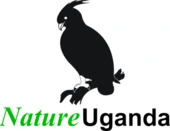A Low-Key Monitoring Approach to the Conservation of the Blue Swallow in Mabamba Wetland

Mabamba wetland was designated an Important Bird and Biodiversity Area and a Ramsar site because of its importance as a habitat for biodiversity. It is home to over 300 bird species, among which is the globally threatened species like the Blue Swallow (supports 38% of the global population) and the Shoebill. It also supports other globally threatened species like the Papyrus Gonolek, the Papyrus Yellow Warbler as well as being a stopover for migratory birds. The wetland is also a source of livelihoods to the local community for materials to make local crafts, building materials, water for domestic and livestock use, fish and medicines.
A survey done in 2002, indicated Mabamba Bay among the Blue Swallow strongholds in Uganda. Other areas include: Nabugabo and Sango bay areas. All these three areas are IBAs and Ramsar Sites but are unfortunately not legally protected and therefore solely lie on the communities that surround them for the protection. The Blue Swallow is a globally and regionally Vulnerable species according to the IUCN Red List. It is an intra-African Migrant breeding in the eastern parts of Southern Africa and wintering in Uganda (May-September) Democratic Republic of Congo and Kenya. It is an aerial species known to inhabit seasonally flooded grasslands and wetland habitats often feeding at wetland edges with scattered shrubs and trees and roosting in burnt patches of the Swamp edges (NatureUganda, 2002 and 2004).
NatureUganda has carried out a number of community conservation and development interventions at Mabamba Bay through a number of projects, the most prominent being the IBA monitoring programme which has been in place for over 25 years. Most of these projects are highly dependent on funds making them unsustainable in the long run this prompted for a monitoring mechanism which would be less costly and sustainable. This is the “Low-key Monitoring” programme, a concept used to monitor resources in Echuya Forest Reserve by the surrounding communities in Echuya Forest Reserve, which is a forested landscape. Low-Key Monitoring (LKM) also referred to as Locally-based Monitoring or Low level Monitoring is a simple monitoring involving local communities and other stakeholders in data collection, interpretation, analysis and decision making on the basis of the results. LKM developes the capacity of the community in resource management, awareness of sustainable development, local ownership to the area, resolves conflicts as well as strengthening civil society.
LKM involves these basic steps: Preparation, Mobilization, design, testing, implementation and monitoring/Evaluation.
The monitoring of the Blue Swallow using LKM at Mabamba started off with a stakeholder meeting where two focal person were appointed to be the champions. They underwent training and have been a resource in monitoring of the Blue Swallow as well as training others. The focal persons were in charge of scouting for new sites which supplemented the old sites and these included; Mako, Buyege, Bubebere, Mabamba Landing Site/Kilombe and Kanyanya. They regularly monitored the above sites and recorded the data on the LKM Form that we developed together with the community by eliminating complicated elements and leaving those they could easily monitor and give regular reports on their sightings as well as threats to the habitats and this will help in fostering conservation. With feedback from these focal persons and trainees, we have developed LKM Guidelines that can easily be replicated to foster conservation of other species in Mabamba or any other areas. The development of these Guidelines acts as a support to the International Single Species’ Action Plan for the Blue Swallow that was developed in 2002 and reviewed in 2012.
Related Posts
Recent Posts
Forests and wetlands degradation and it’s impacts on herpetofauna and other wildlife
Embracing Regenerative Tourism as the next step in Sustainable Tourism
Engaging Site-based Communities in Research and Conservation: The Locally-based Monitoring Initiative
All Categories
- Conservation and Development (27)
- Eco-tourism (3)
- Education and Awareness (10)
- Forests (7)
- Habitats (9)
- Nature walk (2)
- People (5)
- Projects (9)
- Public dialogue (6)
- Research and Monitoring (18)
- Sites (4)
- Species (10)
- Wetlands (12)
- Wildlife (6)




